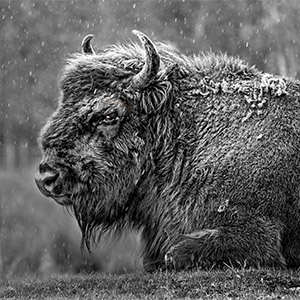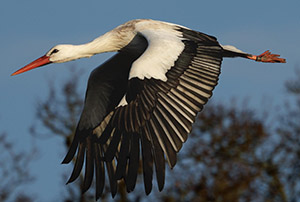
A lifetime with photography and a current project illustrated the latest members' presentations on their photographic interests. George Reekie and Kevin Harwood, both wildlife enthusiasts showed examples of their work.
George had his first camera more than 6o years ago, a Kodak 127 won by his mother and now uses a mirrorless one. He joined his first camera club in Zambia. Back in the UK he joined a club in Taunton and regularly entered photographs in competitions and salons with some success, gaining an Associateship of British Photographic Exhibitions (ABPE) and later a DPAGB. He also gave talks to raise funds for organisations providing operations on hare lips and acted as a judge. He mainly photographs wildlife and claims to practice "moment in time photography". His first image, an osprey taking a salmon, illustrated this admirably. A water rail on ice taken in Somerset further illustrated the theme. Other examples included a great bustard in Scotland, a pelican in Greece, a black heron and steller's sea eagle in Japan. Photography in Japan was often performed at very low temperatures.
Cold was also illustrated with icebergs in Greenland. Valencia Opera House was a rare architectural exhibit. Motor sport, Zapcat powerboat racing, rugby, trains and aircraft are other enthusiasms he also illustrated. Challenged unfairly by a judge that a background had been inserted into an image, he smarted at the implication but was not averse to using the technique when skies were dull. Making images was his overall objective rather than just "representing what was there".

Kevin Harwood is heavily involved in the Sussex white storks project and gave us an update on the progress to date. White storks became extinct in the UK in 1416. Knepp Castle estate, Wadhurst Park and Wintershall have been running a project to reintroduce white storks to Sussex taking advantage of the large flood plain that is potentially attractive to wandering birds with the aim to establish a self-sustaining population by 2030. The project began in 2016 with eggs from captive birds. In 2019 one nest had been established at Knepp. By 2020 three nests had been built and 4 birds fledged. In 2021 there were seven nests and 14 birds fledged. 2022 saw 20 birds fledge. The University of East Anglia has arranged some GPS tracking to locate the birds' travel and migration patterns showing journeys to Europe and Morocco. Chicks are ringed. Since 2016 some 327 storks have been in the UK and some have been tracked over 1500 miles within the UK in 4 months. Their favourite food is grasshoppers. Kevin used the many photographs he has taken to illustrate his talk. See www.whitestorkproject.org.
